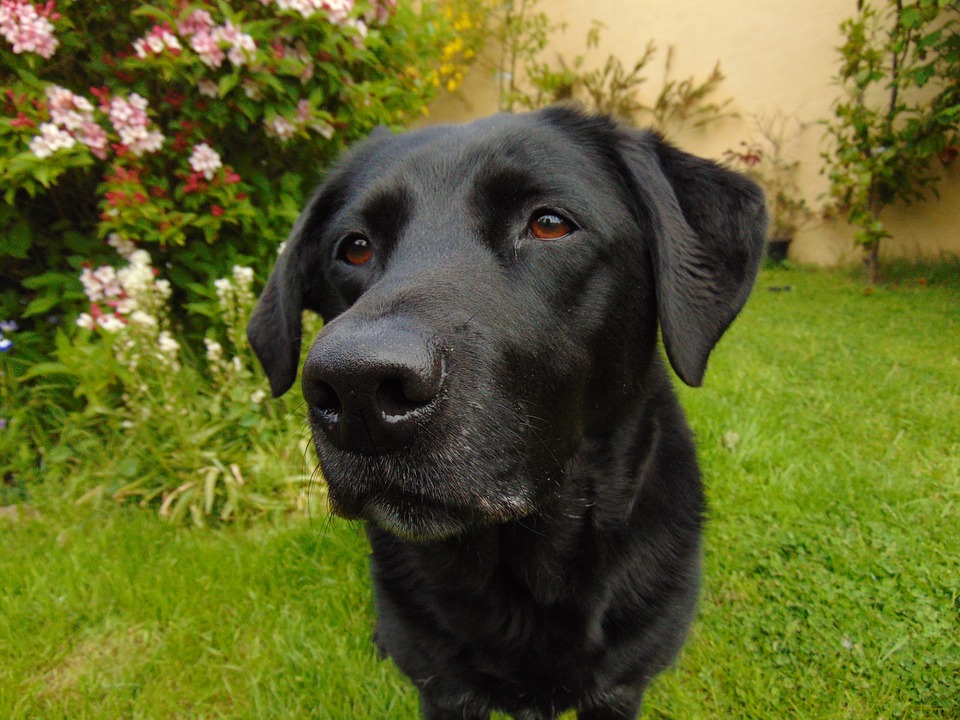 Good-looking, smart and fun-loving, the Labrador Retriever has a lot going for him. He is large, but not too large, he’s calm and easygoing when he’s not exuberantly fetching a tennis ball or a bird. The Lab is a do-it-all kind of dog.
Good-looking, smart and fun-loving, the Labrador Retriever has a lot going for him. He is large, but not too large, he’s calm and easygoing when he’s not exuberantly fetching a tennis ball or a bird. The Lab is a do-it-all kind of dog.
Physical Characteristics
Labrador Retrievers are sturdily built medium to large sized dogs. They may weigh anything from 50 to 80 lbs. once adult, depending on the breeding. This breed has a well-proportioned body with a healthy balance between length of leg and length of spine. The shape is often described as ‘short coupled’.
The Lab has distinguished features that are well known, including a broad skull with ‘chiselled’ features that are softened by his kindly expression and soft are flaps. The body is powerful and well muscled and ends in a thick tail that tapers to a point. The full length muzzle of Lab houses a good cooling system and a strong set of jaws with a full compliment of 42 large white teeth.
The short dense ‘wash and go’ coat of Labrador Retrievers comes in one of three gleaming solid colors and needs little grooming to keep it looking smart. The coat contains a shining slightly oil surface and the individual hairs are straight, although a slight ripple can be seen along the back of some dogs once the adult coat is established. This breed is kept warm in the coldest water by a thick undercoat and the water resistant top coat. A quick shake on emerging from the water sees the majority of the water removed from its repellent surface.
Personality
Labrador Retrievers have the reputation of being one of the most sweet-natured breeds, and it is well deserved. They are outgoing, eager to please and friendly with both people and other animals.
In addition, Labs have the intelligence and eagerness to please that make them easy to train. Training is definitely necessary because this breed has a lot of energy and exuberance. The working heritage of this breed means it is active. The breed needs activity, both physical and mental, to keep it happy. There can be some variation in the activity level of Labs: some are rowdy, others are more laid back. However, all thrive on activity.
Care
The Lab needs to be around his family, and is definitely not a backyard dog. If this dog is left alone for too long, he will probably tarnish his saintly reputation. A lonely and bored lab is apt to dig, chew or find other destructive outlets for his energy.
While this breed can show some variation in activity levels, all of them need activity, both physical and mental. Daily 30-minute walks, a romp at the dog park, or a game of fetch are just a few ways to help your Lab burn off energy. Conversely, a puppy should not be taken for too long walks and should play for a few minutes at a time. This breed is considered a “workaholic”, and will exhaust themselves. It is up to the owner to end play and training sessions.
Health
All dogs have the potential to develop genetic health problems, just as people have the potential to inherit a specific disease. The most well known health issues for Labrador Retrievers are related to the malformation of hips and elbows (hip dysplasia and elbow dysplasia, respectively). Eye disease such as progressive retinal atrophy and cataracts are potential concerns as well for this breed. Exercise-induced collapse, a muscle abnormality that affects the dog’s strength, stamina and movement is also a concern. Other health issues that may affect Labs include heart disease, an orthopedic problem called osteochondrosis, panosteitis (growing pains), epilepsy and allergic skin disease.
History
Labrador Retrievers hail from the island of Newfoundland, off the northeastern Atlantic coast of Canada. They were originally called St. John’s dogs, after the capital city of Newfoundland. This breed served as companions and helpers to the local fisherman beginning in the 1700s. The dogs spent their dogs working alongside their owners, retrieving fish who had escaped hooks and towing in lines, and then returned home to spend the evening with the fisherman’s family.
While the heritage remains unknown, many believe the St. John’s dog was interbred with the Newfoundland Dog and other small local water dogs. The dog’s usefulness and good disposition was noticed by outsiders, and English sportsman imported a few Labs to England to serve as retrievers for hunting. One of the first was the second Earl of Malmesbury, and had St. John’s dogs shipped to England sometime around 1830. The third Earl of Malmesbury was the first person to refer to the dogs as Labradors.
Surprisingly, Labs — now America’s most popular dog — were almost extinct by the 1880s, and the Malmesbury family and other English fans are credited with saving the breed. The breed disappeared in Newfoundland because of government restrictions and tax laws. Families were allowed to keep no more than one dog, and owning a female was highly taxed, so girl puppies were culled from litters. However, the breed survived in England, and the Kennel Club recognized the Labrador Retriever as a distinct breed in 1903. In 1917 the American Kennel Club followed suite, and in the 20s and 30s, British Labs were imported to establish the breed in the U.S.
The popularity of the breed really began to take off after World War II, and in 1991, the Labrador Retriever became the most popular dog registered with the American Kennel Club. That distinction has been hold ever since.
For more information the Labrador Retriever or other dog breeds, don’t hesitate to contact us here at All Pets Veterinary Medical Center with the link below!
















Alfred Hanna liked this on Facebook.